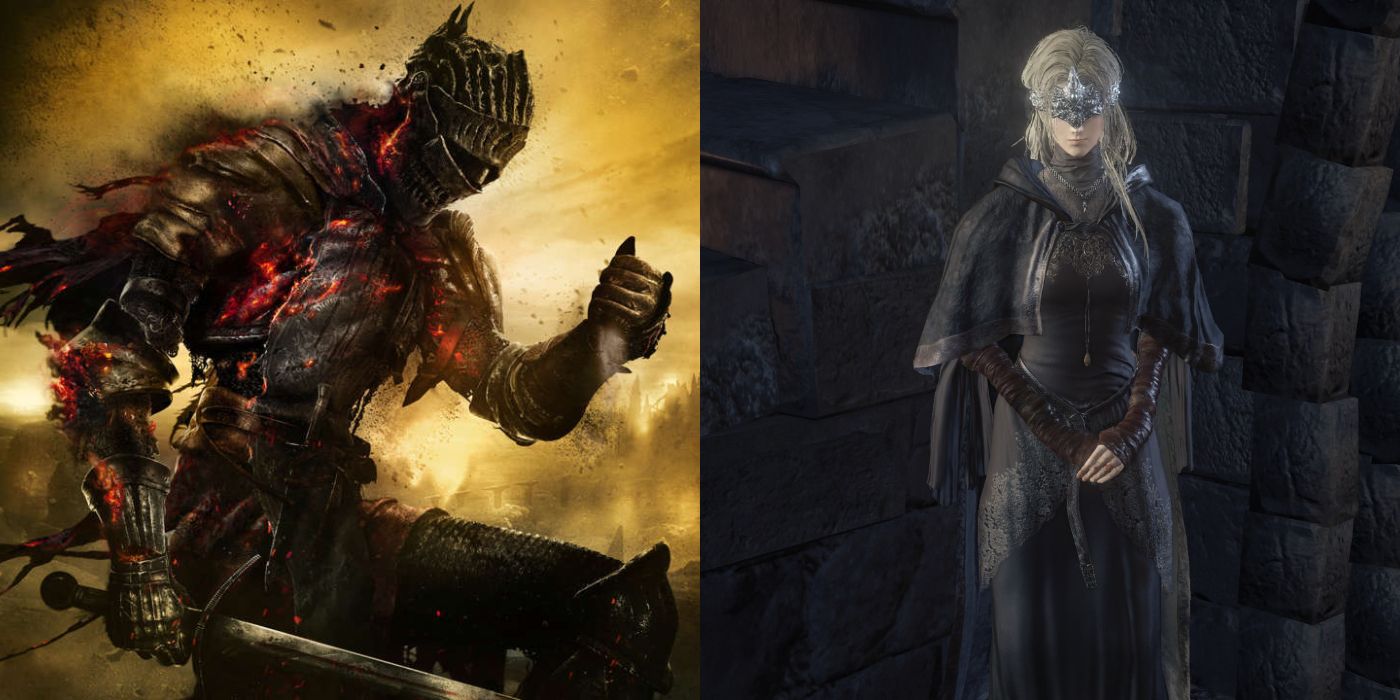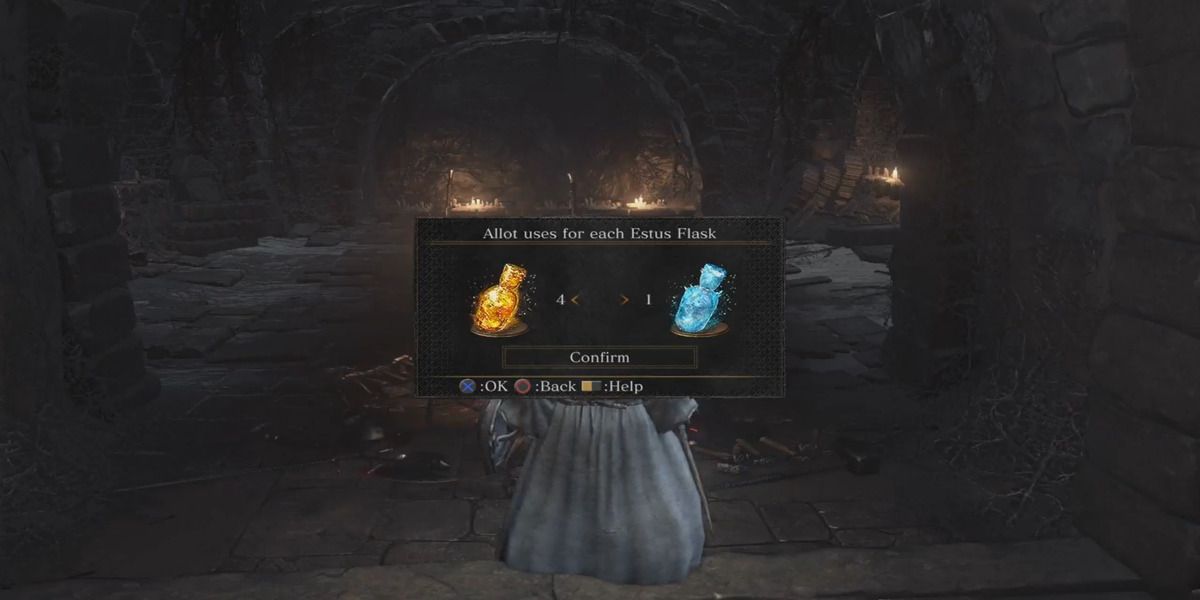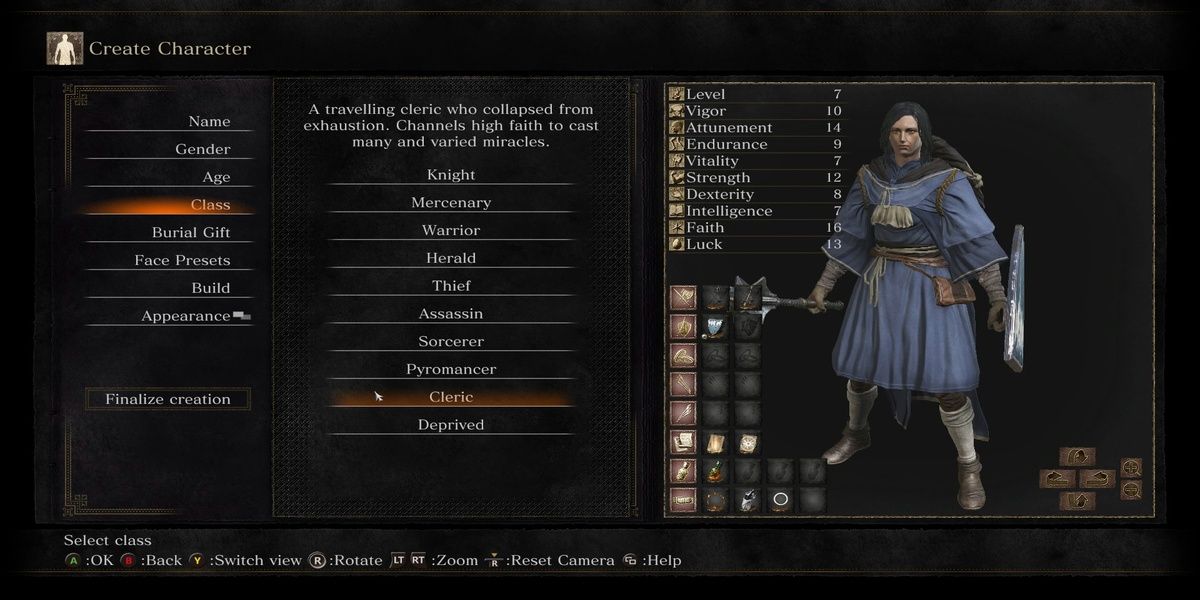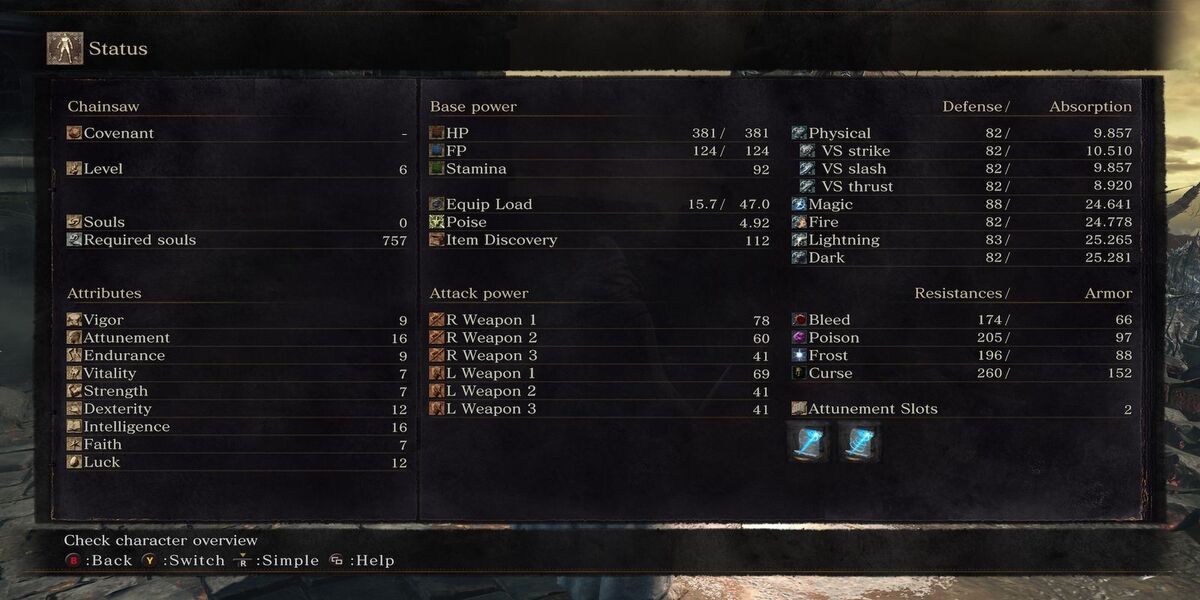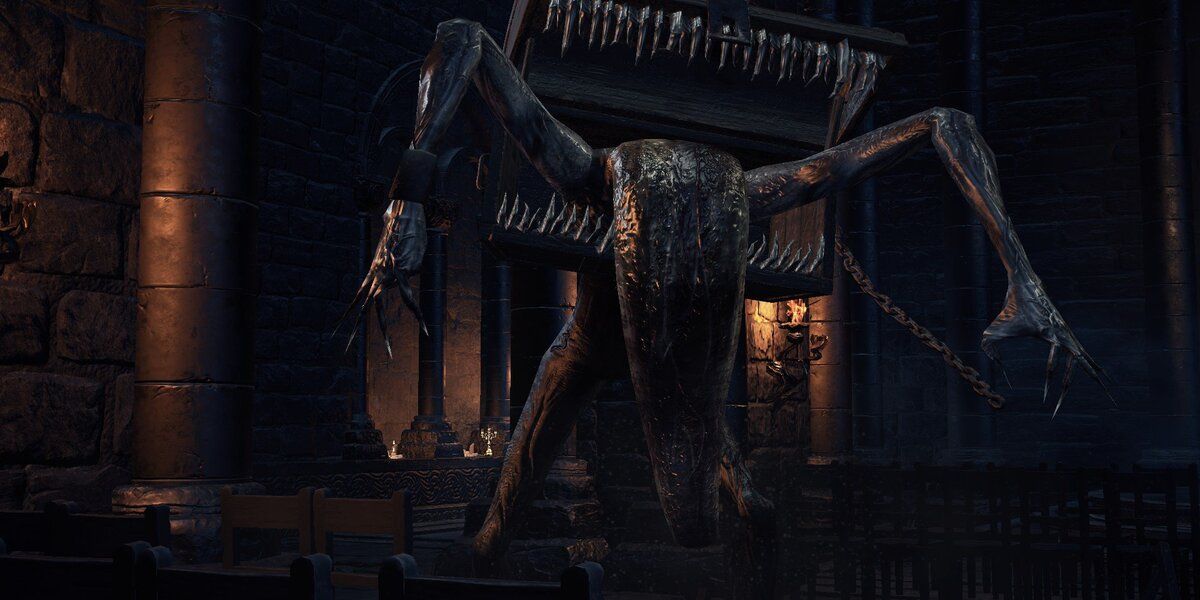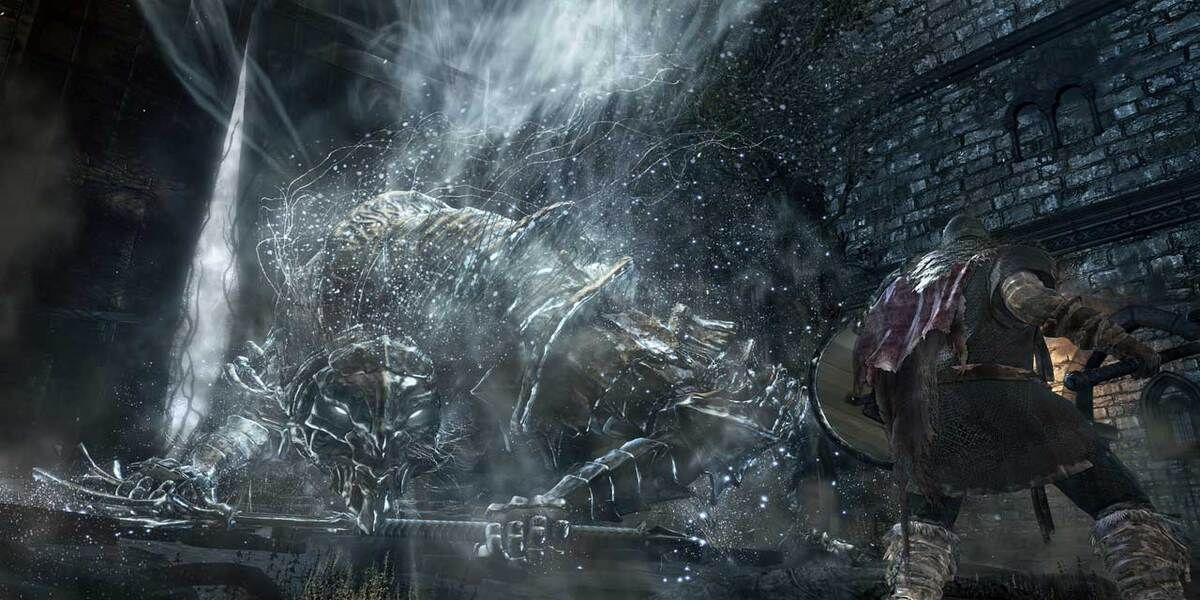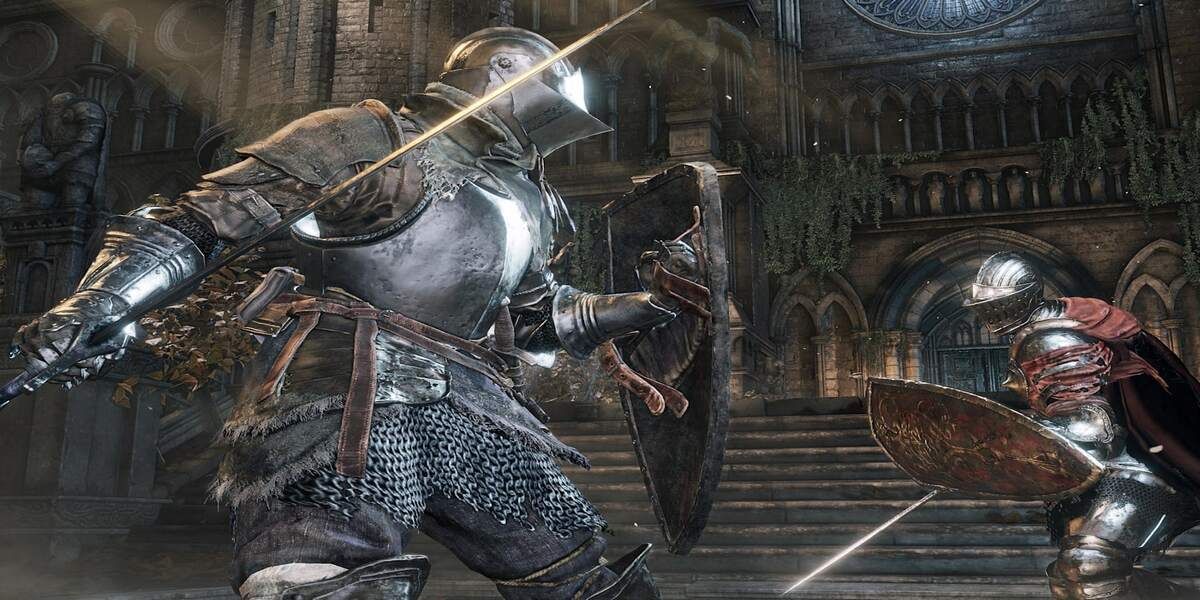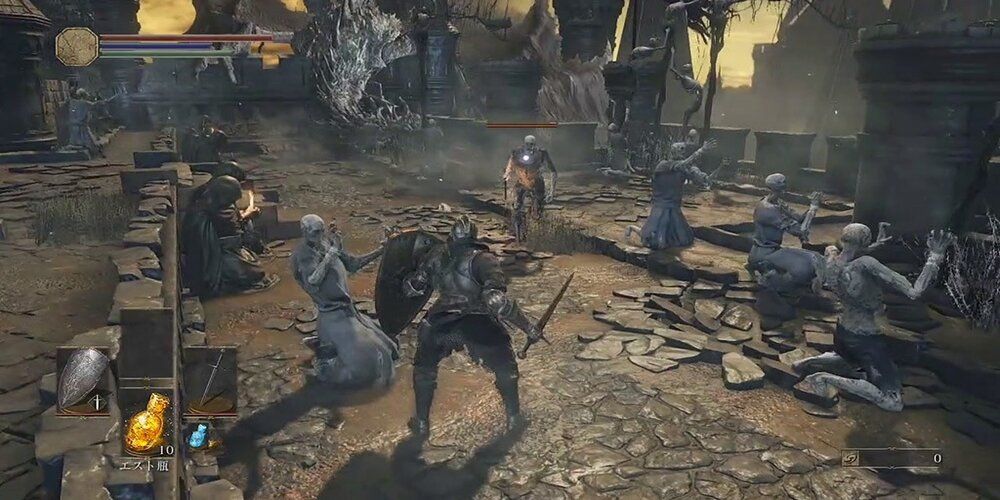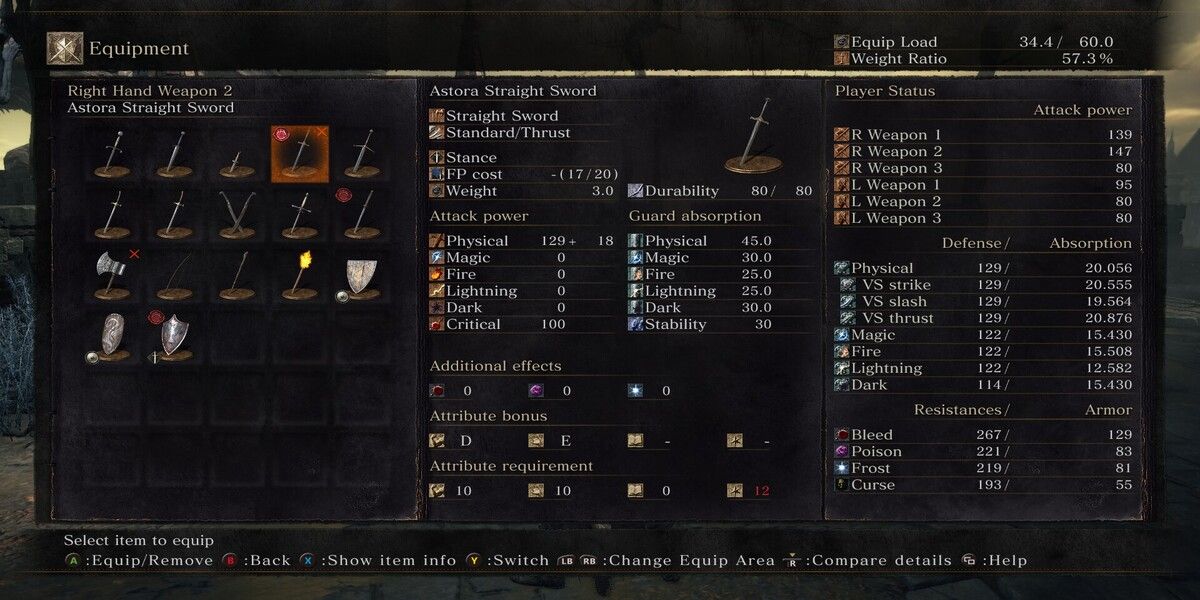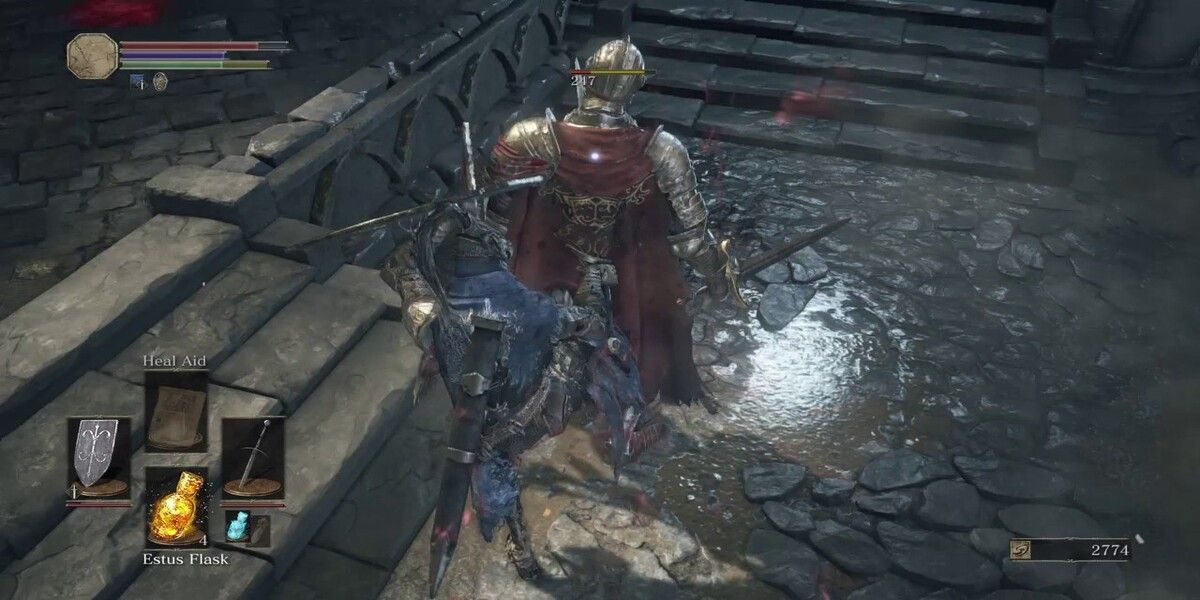The final entry into the critically acclaimed Dark Souls trilogy, Dark Souls III ended the series in style with one of the best entries in the soulsborne franchise. FromSoftware didn't try to re-invent the wheel, and instead kept the game's core mechanics similar to that of the original Dark Souls, while sprinkling influences from the PS4 exclusive Bloodborne.
2011's Dark Souls took the gameplay formula created in Demon's Souls and ran wild with it, creating one of the best and most influential games of the Xbox 360 and PS3 generation. Dark Souls II followed, which wasn't too popular with fans, but is still the highest-rated Dark Souls game on Metacritic. The niche series' success caught the attention of the mainstream media, and Dark Souls III was set to welcome a new audience.
This new audience had to fight an uphill battle with the game, as its lack of hand-holding gives it an unforgiving learning curve. This lack of hand-holding is one of the soulsborne franchise's biggest appeals, but it also means that numerous mistakes will be made on a first playthrough.
10 Not Alotting Estus
In the punishing world of Dark Souls, regenerating health is unsurprisingly very important. Thankfully, each game in the trilogy has given players an upgradable Estus Flask to do just that.
Dark Souls III added a new spin to the Estus Flask mechanic by adding the Ashen Estus Flask, which allows players to refill the new Focus Points bar, which is essential for sorcerer or pyromancy builds. Melee builds, on the other hand, have little use of the Ashen Flask, so can allocate all of their uses to the standard Estus Flask, offering them an extra swig of health that will undoubtedly save them many times.
Regardless of what build players choose, picking a smart balance between the two flasks is essential. Like many things in Dark Souls though, knowing how to allocate the flasks isn't spelled out in a tutorial. To allocate the flasks, speak to Blacksmith Andre in Firelink Shrine, then select "Allot Estus".
9 Not Sticking To A Build Strategy
Picking a class is one of the first decisions that players will need to make in Dark Souls III. There are 10 to choose from and each has its own set of strengths and weaknesses. Other than deprived, which should only be selected by experienced players, there aren't any classes that are inherently better than the other.
This doesn't mean that picking a class isn't impactful though. It's vitally important that players pick their rings, clothing, weaponry, and overall playstyle to suit their chosen class, otherwise, they will end up with a mismatch of abilities that don't complement one another and will consequently lessen their ability to deal significant damage.
8 Illogical Levelling
Following on from the previous point, players must take care when leveling their character. Dark Souls III isn't a game where players should evenly level up each of their 9 attributes, as this will make the game incredibly difficult for first-time players.
Instead, players should only level up attributes that are relevant to their chosen class. For example, a knight build that is solely focusing on melee has no reason to level up Faith, as it won't benefit their playstyle and will just be a missed opportunity to improve a key attribute like Strength or Vigor.
7 Not Paying Attention To Equip Load
Although it may be tempting to throw together an outfit consisting of the heaviest and sturdiest armor, this will significantly affect the player's ability to roll.
Rolling is the most effective way to avoid damage in Dark Souls III, and wearing armor that is too heavy will considerably slow the player's roll speed down. Thankfully, there are four ways that players can improve their Equip Load stat - they can either level up their vitality attribute, wear the Ring of Favor, wear Havel's Ring, or wear the Prisoner's Chain.
6 Not Checking For Mimics
FromSoftware's soulsborne franchise is consistently praised for being tough but fair. One counter-argument that is sometimes brought to the table is mimic chests, strong enemies that disguise as a chest to attack the player when they try to open it.
Although it may seem like a cheap trick, there are in fact two ways to spot a mimic. The first is that the mimic has to breathe, which will open the chest just wide enough for its teeth to show. The second is the shape of the chain at the side of the chest, if it's curled inwards it's safe, but if the chain pointing haphazardly outwards, then you should stay far, far away.
5 Entering A Tough Area With Numerous Souls
Frequently leveling up is an essential way for players to ensure that they are suitably prepared for what's to come when progressing through the game. Therefore, it's important to frequently revisit Firelink Shrine and spend earnt Souls with the Fire Keeper, especially after beating a boss.
Bosses drop considerably more souls than any other enemy. Losing souls can be utterly heartbreaking, and the only way to get them back is through good old-fashioned grinding.
4 Lacking Patience With Combat
Dark Souls III's combat, much like the rest of the trilogy, is slow and methodical. This can be jarring for new players, who often opt for an aggressive all guns blazing approach, which they are swiftly punished for.
For melee builds, the combat is often compared to rhythm games. Players should be patient, study the enemy's patterns, and only attack when a window of opportunity presents itself.
3 Taking On Multiple Enemies
Another key feature of the Dark Souls trilogy's combat is that it is best suited for one on one encounters. This was a big source of criticism in Dark Souls II, as the game frequently threw multiple enemies at the player despite the gameplay not being suited for it.
Dark Souls III fixed this issue and allowed players to fight enemies one on one if they were intelligent with how they approached a group of foes. If the player comes across a group of enemies, they should draw them out one by one. It may seem tedious, but it's the best chance of survival.
2 Not Upgrading Weapons
Upgrading weaponry is another essential way for players to ensure that they are prepared for the increasingly difficult areas and bosses that are to come.
Andre in Firelink Shrine is the man for the job, as the blacksmith can upgrade the player's weapons with standard reinforcement using titanate pieces, or with infusions through the use of gems. The increase in damage that the weapon deals will be immediately apparent.
1 Not Backstabbing
Backstabbing is the most deadly attack that melee builds can utilize. It doesn't work on all enemies, but for those that it does, it can make fights trivial.
Executing the backtab is pretty self-explanatory, players need to get behind an enemy then simply press the standard attack button (usually RB or R1) and watch as their character hits their opponent with a devastating blow.
The backstab can even be utilized on some bosses, including the tricky early encounter against the Abyss Watchers.

